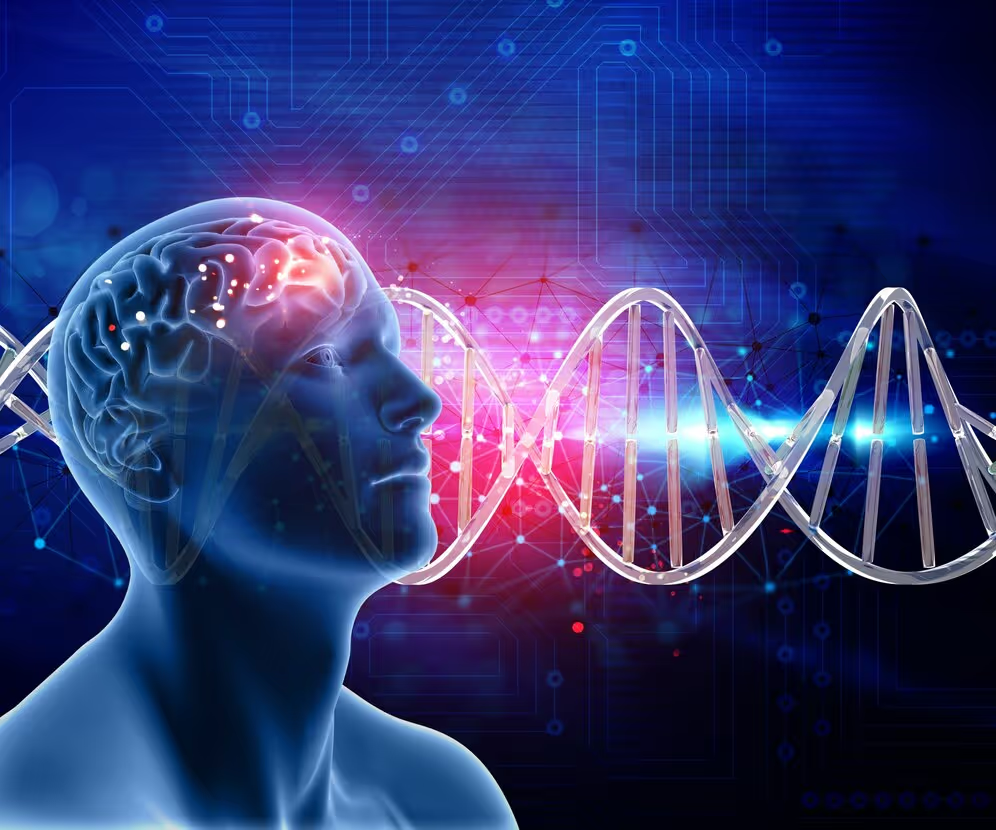Dopamine and Addiction: Separating Myths and Facts

Understanding Dopamine and Addiction
To comprehend the connection between dopamine and addiction, it is essential to gain a clear understanding of the role dopamine plays in the development and maintenance of addictive behaviors.

Introduction to Dopamine and its Role
Dopamine is a neurotransmitter, a chemical messenger in the brain that helps transmit signals between nerve cells. It plays a crucial role in various brain functions, such as motivation, pleasure, and reward. When we engage in activities that are pleasurable or rewarding, dopamine is released, creating a sense of enjoyment and reinforcing those behaviors.
The Complex Relationship between Dopamine and Addiction
Contrary to popular belief, dopamine is not the sole cause of addiction. Addiction is a complex condition influenced by a multitude of factors, including genetics, environment, and mental health. While dopamine does play a role in addiction, it is only one piece of the puzzle.
Dopamine's involvement in addiction can be better understood through the concept of reward pathways in the brain. These pathways are responsible for reinforcing behaviors that are beneficial for our survival, such as eating and socializing. When substances or activities stimulate the release of dopamine in these reward pathways, they can create a powerful sense of pleasure and reinforcement. Over time, this can lead to the development of addictive behaviors.
However, it is crucial to note that addiction is not solely driven by dopamine. Other neurotransmitters and brain regions, such as serotonin and the prefrontal cortex, also contribute to addiction. The interplay between these various factors makes addiction a complex and multi-faceted condition.
By dispelling misconceptions surrounding dopamine's role in addiction, we can gain a clearer understanding of the intricate factors that contribute to addictive behaviors. In the subsequent sections, we will explore the reward pathway and the influence of dopamine on cravings and relapse, shedding further light on the relationship between dopamine and addiction.
Debunking Misconceptions
When discussing the relationship between dopamine and addiction, it is important to dispel certain misconceptions that may exist. By understanding the facts, we can gain a clearer picture of the complex nature of addiction.
Myth: Dopamine is the Sole Cause of Addiction
Contrary to popular belief, dopamine is not the sole cause of addiction. While dopamine plays a significant role in the brain's reward system and is involved in the reinforcement of addictive behaviors, it is just one piece of the puzzle. Addiction is a complex condition influenced by various factors, including genetics, environment, and individual vulnerabilities. It is essential to recognize that addiction is a multifaceted phenomenon that cannot be solely attributed to dopamine.
Myth: Dopamine is Always Pleasurable
Another common misconception is that dopamine is always associated with pleasure. While dopamine is indeed involved in feelings of pleasure and reward, its role extends beyond pure enjoyment. Dopamine is released in response to various stimuli, including food, social interaction, and even stress. It serves as a motivator, driving us to seek out experiences that are essential for survival. In the context of addiction, dopamine release can reinforce addictive behaviors, but it does not guarantee a pleasurable experience for the individual.
Myth: Increasing Dopamine Levels Leads to Addiction
Contrary to popular belief, simply increasing dopamine levels does not directly lead to addiction. While it is true that certain substances or activities can cause a surge in dopamine release, it is the repetitive and excessive activation of the brain's reward system that can contribute to the development of addiction. The brain's response to dopamine can become dysregulated, leading to a heightened desire for the substance or behavior in question. It is important to recognize that addiction is a complex interplay of various factors, and dopamine is just one aspect of this intricate process.
By dispelling these misconceptions, we can better comprehend the complexity of addiction and its relationship with dopamine. It is crucial to approach addiction with a holistic perspective, taking into account the individual's unique circumstances and the various factors that contribute to their struggles. Understanding the role of dopamine is just one piece of the puzzle in addressing addiction effectively. By exploring the underlying causes and employing comprehensive treatment approaches, we can provide individuals with the support they need to overcome addiction.
The Dopamine Reward System
To understand the link between dopamine and addiction, it is essential to explore the concept of the dopamine reward system. This system plays a crucial role in reinforcing certain behaviors and is intricately connected to addiction.
Explaining the Reward Pathway
The reward pathway, also known as the mesolimbic pathway, is a complex network of brain regions involved in experiencing pleasure and reinforcing behaviors. One of the key players in this pathway is dopamine, a neurotransmitter that carries signals between nerve cells.
When we engage in activities that are pleasurable or rewarding, such as eating delicious food or participating in social interactions, dopamine is released in specific areas of the brain. This release of dopamine creates a sense of pleasure and reinforces the behavior, making us more likely to repeat it in the future.
Dopamine's Role in Reinforcing Behaviors
Dopamine plays a critical role in reinforcing behaviors that are essential for our survival and well-being. It acts as a motivational molecule, encouraging us to seek out activities that are necessary for our survival, such as eating, drinking, and procreating.
In the context of addiction, substances or behaviors that trigger a surge of dopamine release can hijack the brain's reward system. Drugs, for example, can stimulate the release of large amounts of dopamine, leading to intense feelings of pleasure and euphoria. Over time, the brain adapts to these surges of dopamine and becomes less responsive to natural rewards, making the individual more reliant on the addictive substance or behavior to experience pleasure.
It's important to note that while dopamine is involved in the reward system and reinforcement of certain behaviors, it is not the sole cause of addiction. Addiction is a complex condition influenced by various factors, including genetics, environment, and psychological factors.
By gaining insights into the role of dopamine in the reward system, we can begin to comprehend how addiction develops and why certain behaviors become compulsive. Addressing the underlying mechanisms of addiction, including the influence of dopamine, is a crucial step in developing effective treatment strategies. However, it is important to take a holistic approach that considers the individual's unique circumstances and addresses the underlying causes of addiction.
Dopamine and Cravings
When exploring the relationship between dopamine and addiction, it is important to understand the role of dopamine in the formation of cravings and its influence on relapse.
Dopamine and the Formation of Cravings
Dopamine plays a significant role in the formation of cravings, which are intense desires for substances or behaviors associated with addiction. Cravings are often triggered by environmental cues, such as places, people, or objects linked to past substance use or addictive behaviors. These cues can activate the brain's reward system, leading to the release of dopamine.
The release of dopamine in response to these cues creates a strong association between the cues and the pleasurable effects of the addictive substance or behavior. Over time, this association becomes deeply ingrained in the brain, making the cravings more intense and difficult to resist.
It is important to note that dopamine is not solely responsible for the formation of cravings. Other neurotransmitters and brain regions also contribute to the craving process, making it a complex phenomenon.
The Influence of Dopamine on Relapse
Dopamine also plays a crucial role in relapse, which is the return to substance use or addictive behaviors after a period of abstinence. The release of dopamine during substance use or engaging in addictive behaviors reinforces the association between the addictive substance or behavior and the pleasurable effects experienced.
During abstinence, the brain undergoes adaptations to restore balance in dopamine levels. However, exposure to cues associated with the addictive substance or behavior can trigger a surge of dopamine, leading to intense cravings and an increased risk of relapse.
Understanding the influence of dopamine on relapse highlights the importance of addressing cravings and developing strategies to manage them effectively. Treatment approaches that focus on reducing cravings, developing coping mechanisms, and addressing the underlying causes of addiction can help individuals navigate the challenges of relapse prevention.
By gaining a deeper understanding of how dopamine contributes to the formation of cravings and its role in relapse, individuals struggling with addiction can better comprehend the complex nature of their condition. It is essential to remember that addiction is a multifaceted issue that involves various factors beyond dopamine alone. A holistic approach that addresses the underlying causes of addiction and incorporates comprehensive treatment strategies is crucial for long-term recovery.
The Importance of a Holistic Approach
When it comes to addressing addiction, taking a holistic approach is crucial for long-term recovery. While dopamine plays a significant role in addiction, it is important to recognize that addiction is a complex and multifaceted issue that goes beyond dopamine regulation. In order to effectively treat addiction, it is essential to address the underlying causes and provide comprehensive support.
Addressing the Underlying Causes of Addiction
Addiction is often influenced by a combination of factors including genetics, environment, mental health, and social factors. While dopamine's involvement in the reward pathway is well-known, it is not the sole cause of addiction. By taking a holistic approach, treatment can focus on identifying and addressing the underlying causes of addiction. This may involve individual therapy, group counseling, family support, and other evidence-based interventions. Understanding the underlying causes can help individuals develop healthier coping mechanisms and reduce the risk of relapse.
Treating Addiction Beyond Dopamine Regulation
While dopamine plays a role in reinforcing addictive behaviors, it is important to recognize that addiction treatment should go beyond dopamine regulation alone. Simply increasing dopamine levels does not guarantee successful recovery. A holistic approach to addiction treatment involves a comprehensive and personalized treatment plan that addresses the physical, emotional, and social aspects of addiction.
Treatment options may include detoxification, medication-assisted treatment, counseling, support groups, and aftercare planning. These interventions aim to address the physical and psychological aspects of addiction, provide coping strategies, and support individuals in rebuilding their lives.
By taking a holistic approach to addiction treatment, individuals can receive the comprehensive support they need to overcome addiction and maintain long-term recovery. It is important to remember that addiction is a complex condition and requires individualized care. If you or someone you know is struggling with addiction, seeking professional help and support is crucial.
Conclusion
Taking a holistic approach to addiction treatment is essential for long-term recovery. While dopamine plays a significant role in addiction, it is important to recognize that addiction is a complex and multifaceted issue that goes beyond dopamine regulation. Addressing the underlying causes of addiction and providing comprehensive support is crucial. Treatment options may include detoxification, medication-assisted treatment, counseling, support groups, and aftercare planning.
By focusing on the physical, emotional, and social aspects of addiction, individuals can receive the comprehensive care they need to overcome addiction and maintain long-term recovery.
